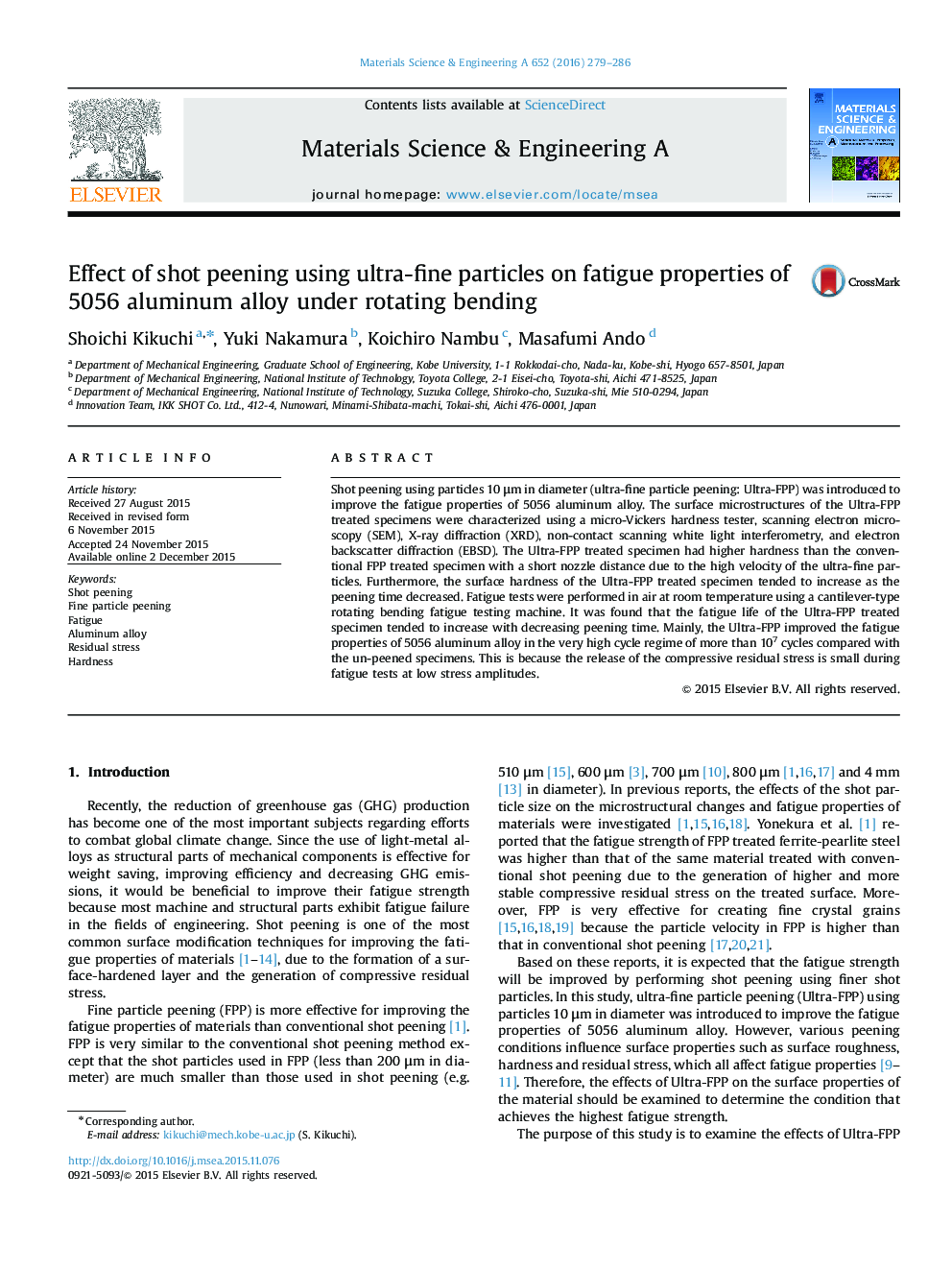| Article ID | Journal | Published Year | Pages | File Type |
|---|---|---|---|---|
| 1573830 | Materials Science and Engineering: A | 2016 | 8 Pages |
Abstract
Shot peening using particles 10 μm in diameter (ultra-fine particle peening: Ultra-FPP) was introduced to improve the fatigue properties of 5056 aluminum alloy. The surface microstructures of the Ultra-FPP treated specimens were characterized using a micro-Vickers hardness tester, scanning electron microscopy (SEM), X-ray diffraction (XRD), non-contact scanning white light interferometry, and electron backscatter diffraction (EBSD). The Ultra-FPP treated specimen had higher hardness than the conventional FPP treated specimen with a short nozzle distance due to the high velocity of the ultra-fine particles. Furthermore, the surface hardness of the Ultra-FPP treated specimen tended to increase as the peening time decreased. Fatigue tests were performed in air at room temperature using a cantilever-type rotating bending fatigue testing machine. It was found that the fatigue life of the Ultra-FPP treated specimen tended to increase with decreasing peening time. Mainly, the Ultra-FPP improved the fatigue properties of 5056 aluminum alloy in the very high cycle regime of more than 107 cycles compared with the un-peened specimens. This is because the release of the compressive residual stress is small during fatigue tests at low stress amplitudes.
Related Topics
Physical Sciences and Engineering
Materials Science
Materials Science (General)
Authors
Shoichi Kikuchi, Yuki Nakamura, Koichiro Nambu, Masafumi Ando,
